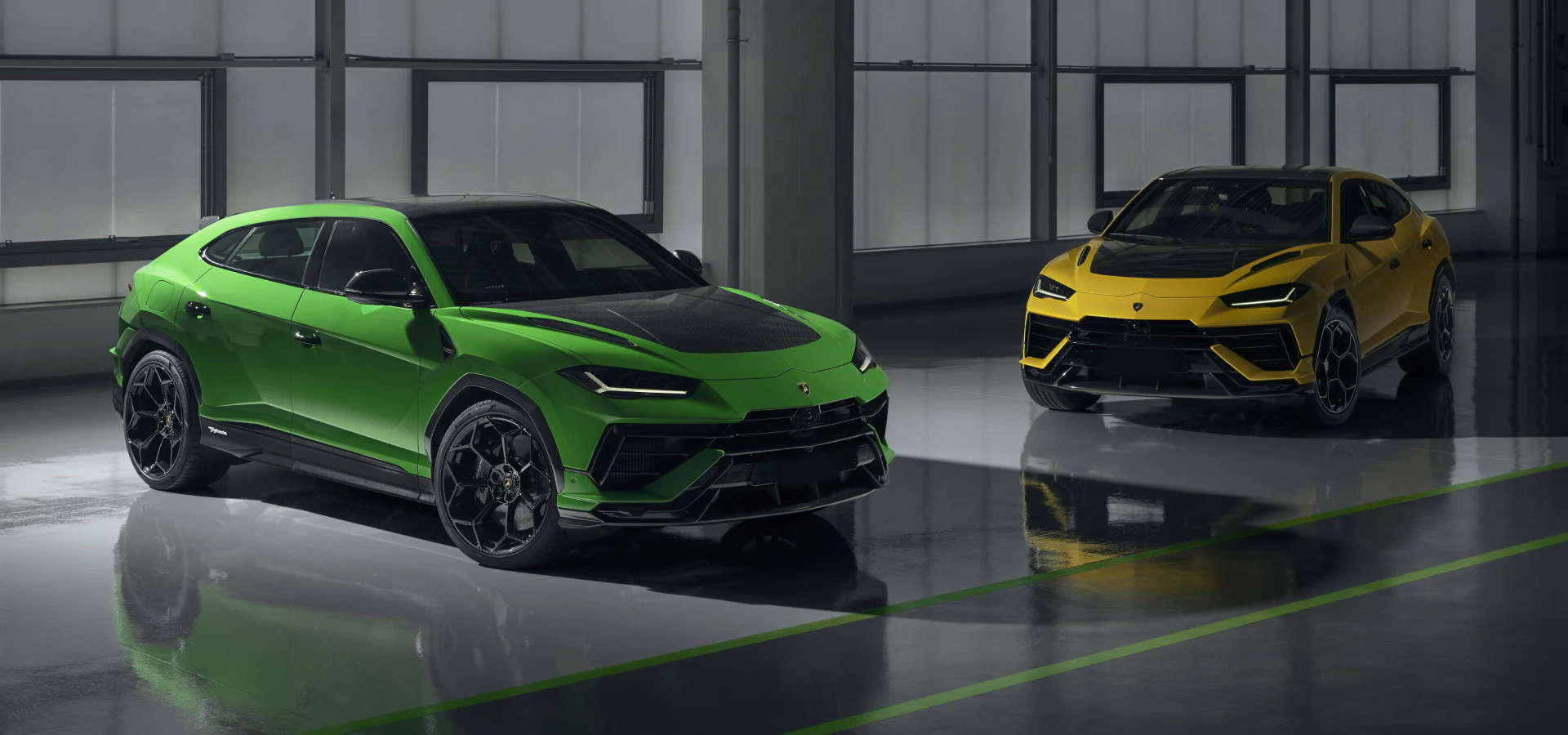According to a recent Autocar report, the Lamborghini Urus will undergo significant changes in the coming years. In 2024, the non-electrified V-8 powertrain option will be discontinued, and the Urus will transition to an all-electric powertrain by 2029.
Plug-in hybrid
However, before the complete transition to electric, Lamborghini will introduce a plug-in hybrid version of the Urus next year. This plug-in hybrid variant will retain the current twin-turbo 4.0-litre V-8 engine but incorporate electric assistance to enhance performance. It is expected to be the most powerful Urus variant, surpassing the current lineup’s 657 horsepower.
https://www.youtube.com/watch?v=TdDmHsLnPZ8
Urus
The Urus, Lamborghini’s most popular model since its launch in 2018, underwent an update last year with the Urus S variant. Additionally, a sportier Urus Performante model was introduced to the lineup. However, in the future, Lamborghini plans to discontinue the non-hybrid powertrain option altogether, signalling a shift toward electrification.
Following the plug-in hybrid Urus, Lamborghini plans to release an all-electric version of the Urus as its second electric vehicle, expected after the launch of a 2+2 grand tourer in 2028. The electric Urus will represent a new model line for Lamborghini, offering no direct predecessor.

All-electric powertrain
It aims to provide a range of 300 miles and a comfortable rear seat. Lamborghini initially intended to use all-electric powertrains primarily in its more luxurious models, possibly building electric supercars if regulations required.
In the meantime, Lamborghini has plans to introduce additional variants of the Aventador-replacing Revuelto and a replacement for the Huracán. The company will also reconfigure its factory in Sant’Agata Bolognese, Italy, where the Revuelto and Huracán replacements will be manufactured on the same assembly line. This marks the first time two Lamborghini models will share a production line.
Competitors
As a luxury SUV, the Lamborghini Urus competes in the high-performance SUV segment. While the transition to an all-electric powertrain may affect its future competitors, here are some notable competitors in the current market:
- Porsche Cayenne Turbo S: The Cayenne Turbo S is a high-performance SUV from Porsche, known for its powerful engines, sporty handling, and luxurious features. It offers a range of engine options, including hybrid variants.
- Bentley Bentayga: The Bentley Bentayga combines luxury and performance, offering a range of engine options, including a powerful W12 engine. It features a luxurious interior, advanced technology, and customization options.
- Aston Martin DBX: The Aston Martin DBX is the brand’s first SUV, known for its stylish design, strong performance, and luxurious features. It offers a V8 engine with impressive power and a well-appointed interior.
- Mercedes-AMG GLE 63 S: The AMG version of the Mercedes GLE SUV, the GLE 63 S, is a high-performance SUV with a potent V8 engine, sporty handling, and a luxurious interior. It combines power and practicality in a stylish package.
- BMW X5 M: The BMW X5 M is a high-performance SUV that delivers impressive power and handling. It has a powerful V8 engine, sporty styling, advanced technology, and safety features.
- Audi RS Q8: The Audi RS Q8 is a high-performance SUV that offers luxury, power, and versatility. It features a powerful V8 engine, dynamic handling, and a well-appointed interior with advanced technology.
- Range Rover Sport SVR: The Range Rover Sport SVR is a high-performance variant of the popular SUV. It boasts a powerful V8 engine, off-road capability, and a luxurious interior.
These are just a few examples of competitors in the high-performance luxury SUV segment. The market continuously evolves, and new models and competitors may emerge as the automotive industry transitions towards electric vehicles.
Here are some potential pros and cons of the Lamborghini Urus transitioning to an all-electric powertrain:
Pros:
- Environmental Benefits: One of the main advantages of an all-electric powertrain is its reduced environmental impact. The Urus would produce zero tailpipe emissions by eliminating the combustion engine and running on electricity, contributing to lower carbon emissions and improved air quality.
- Performance and Power: Electric powertrains often provide instant torque, resulting in impressive acceleration and performance. The transition to all-electric could potentially enhance the Urus’s power and performance, offering even more significant speed and agility.
- Lower Operating Costs: Electric vehicles generally have lower operating costs than traditional internal combustion engines. Charging an electric vehicle is often cheaper than fueling up with gasoline, and electric vehicles have fewer maintenance requirements due to fewer moving parts.
- Quiet Operation: Electric vehicles operate silently, providing a quieter and more peaceful driving experience. This can be particularly appealing for luxury vehicle owners who prioritize a refined and serene driving environment.
Cons:
- Range and Charging Infrastructure: While electric vehicles have made significant advancements in range, it is still a concern for some consumers. Depending on the specific details of the electric Urus, the range may be limited compared to a traditional combustion engine vehicle. Additionally, the availability and convenience of charging infrastructure may vary depending on the region, impacting the vehicle’s practicality for long-distance travel.
- Transition and Adaptation: The shift from a V-8 powertrain to an all-electric powertrain represents a significant transition for Lamborghini and its customers. Some enthusiasts may have reservations about losing the distinctive engine sound and performance characteristics associated with a combustion engine.
- Charging Time: Electric vehicles typically require more recharge than refuelling with gasoline. While fast-charging options are becoming more prevalent, charging an electric vehicle is still not as quick and convenient as refuelling with gasoline, which may be a consideration for customers with busy lifestyles or long-distance travel needs.
- Cost: Electric vehicles often come with a higher upfront cost than their internal combustion counterparts. The technology and infrastructure required for electric vehicles can still be more expensive, which may affect the pricing of the all-electric Urus.
Conclusion
The Lamborghini Urus’s transition to an all-electric powertrain in 2029 represents a significant shift for the high-performance SUV. While the specific details of the electric Urus are unavailable at this time, it is expected to offer environmental benefits, enhanced performance, and potentially lower operating costs compared to its non-electric counterparts.
This transition also brings potential challenges and considerations. Range and charging infrastructure, the loss of traditional engine characteristics, charging time, and the potential for higher upfront costs may impact the all-electric Urus’s overall appeal.
Unique blend competitors
As the luxury SUV market is highly competitive, the electric Urus is likely to face rivals such as the Porsche Cayenne Turbo S, Bentley Bentayga, Aston Martin DBX, Mercedes-AMG GLE 63 S, BMW X5 M, and Audi RS Q8. These competitors offer their unique blend of performance, luxury, and technology.
Demands
Ultimately, the success of the all-electric Urus will depend on how Lamborghini balances the demands of luxury SUV enthusiasts with the growing need for sustainable and efficient mobility. The market landscape is evolving rapidly, and it will be interesting to see how Lamborghini and its competitors adapt to the changing electric vehicle preferences and regulations.





































